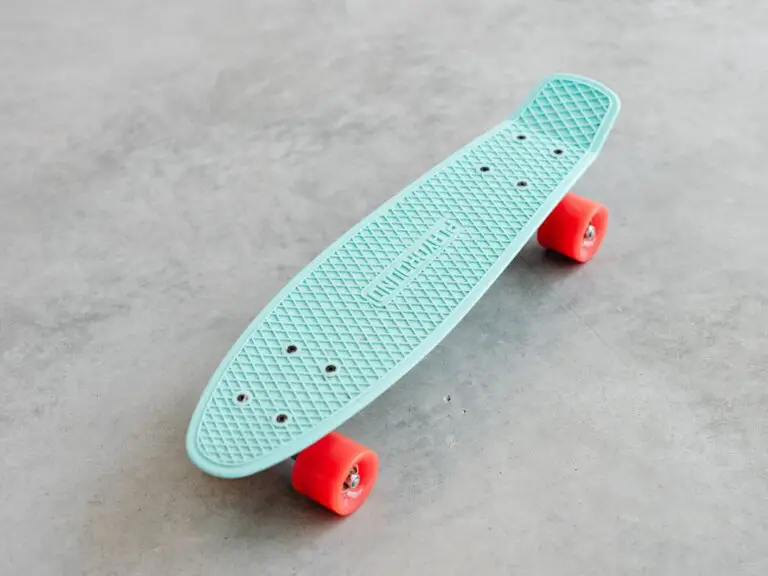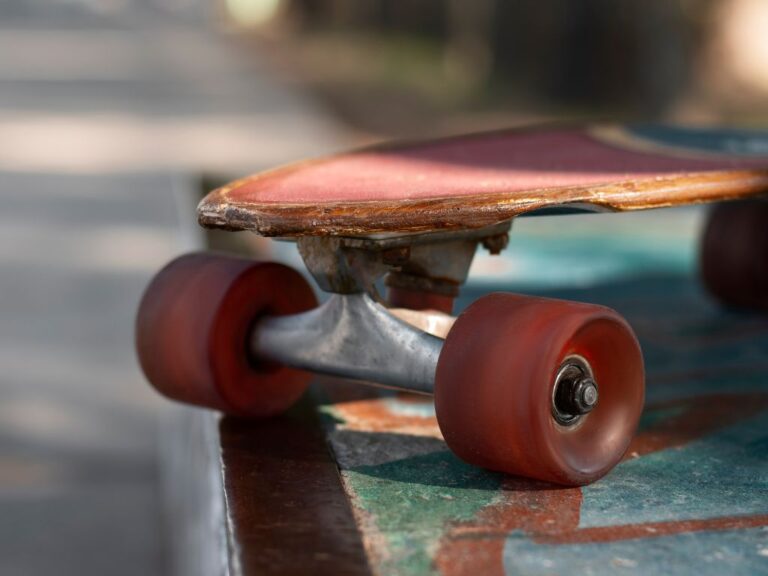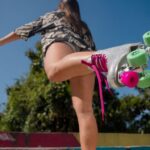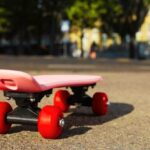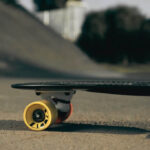When it comes to skateboarding, every detail matters—especially your wheels. Whether you’re cruising through the streets, carving up a skatepark, or perfecting your tricks, the right Skateboard Wheel Size Chart can make all the difference in your performance. But with so many options out there, how do you know which wheel size is best for your style?
In this guide, we’ll break down everything you need to know about skateboard wheel sizes, from how they impact your ride to which size suits your skating goals. Whether you’re a beginner or a seasoned pro, understanding the Skateboard Wheel Size Chart is the key to unlocking a smoother, faster, and more controlled ride. Let’s dive in and find the perfect wheels to elevate your skateboarding game!
Understanding Skateboard Wheel Measurements
Before diving into the different sizes and types of skateboard wheels, it’s essential to understand the two main measurements used to describe them: diameter and durometer.
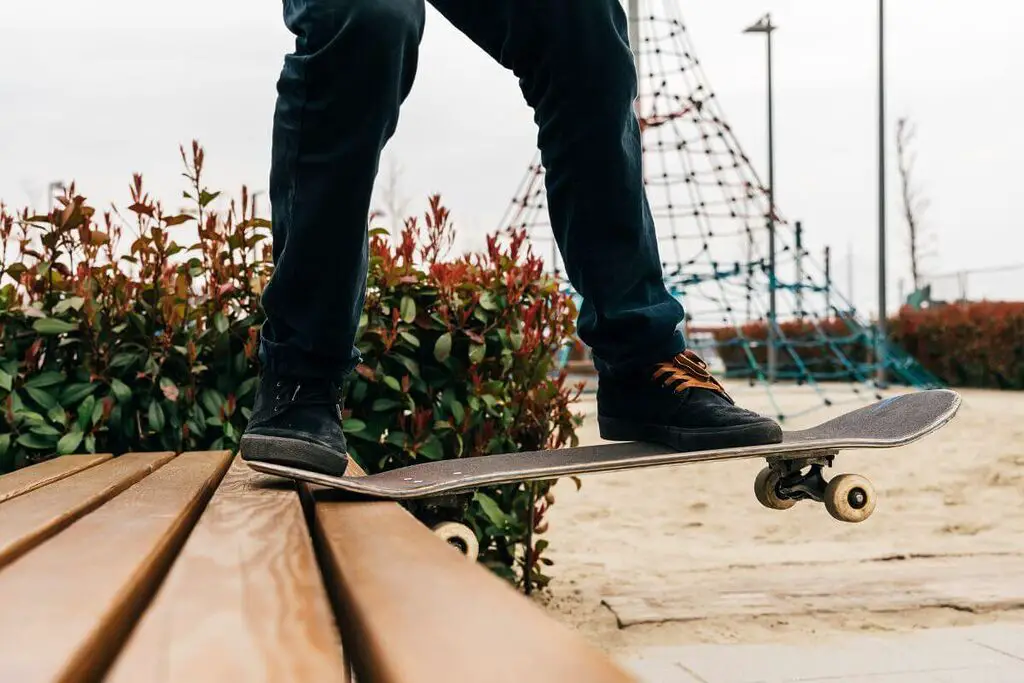
Diameter: Finding the Perfect Wheel Size
Skateboard wheel diameter is measured in millimeters (mm), and it refers to the size of the wheel. The diameter of the wheel plays a significant role in how quickly you can accelerate and how tightly you can turn. Generally, smaller wheels result in a slower ride, while larger wheels provide more speed.
- 50-53mm: These small wheels are ideal for trick riding and smaller riders who skate street, skate parks, and bowls. They offer stability and maneuverability for technical skating.
- 54-59mm: Average wheel sizes that work well for beginners and bigger riders who skate street, skate parks, bowls, and vert ramps. They provide a balance between speed and control.
- 60mm+: Specialty wheels designed for riders who skate longboards, old-school boards, downhill, and rough terrains. These larger wheels are built for speed and can handle more challenging surfaces.
It’s important to consider your height, weight, and the type of skateboarding you intend to do when choosing the right wheel diameter. Experimenting with different sizes can help you find the perfect fit for your riding style.
Durometer: Determining Wheel Hardness
Durometer measures the hardness of the skateboard wheel. Most manufacturers use the Durometer A Scale, which is a 100-point scale that quantifies how hard a wheel is. The higher the number, the harder the wheel. The average wheel durometer is around 99a.
- 78a-87a: Soft wheels designed for rough surfaces, longboards, or street boards that require a lot of grip to roll over cracks and pebbles. They offer a smooth and comfortable ride.
- 88a-95a: Slightly harder and faster wheels with decent grip. These wheels are suitable for street and rough surfaces.
- 96a-99a: Versatile wheels that provide a nice balance of speed and grip. They are great for beginners skating street, skate parks, ramps, pools, and smooth surfaces.
- 101a+: Hard and fast wheels with minimal grip. These wheels are more suitable for slick and smooth surfaces. They are commonly used by professional skateboarders.
Some manufacturers may use the Durometer B Scale, which measures 20 points fewer than the A Scale but allows for an extra 20 points for the hardest wheels. For example, an 80b durometer is equivalent to a 100a durometer.
It’s important to note that wheel hardness can affect your skateboarding experience. Softer wheels provide more grip and are better suited for street skating, while harder wheels are faster and more suitable for smooth surfaces like skate parks.
Skateboard Wheel Size Chart : Choosing the Right Wheel Shape
In addition to size and hardness, skateboard wheels also come in various shapes that can affect your riding experience. The shape of the wheel is determined by factors such as the width, riding surface, and cut.
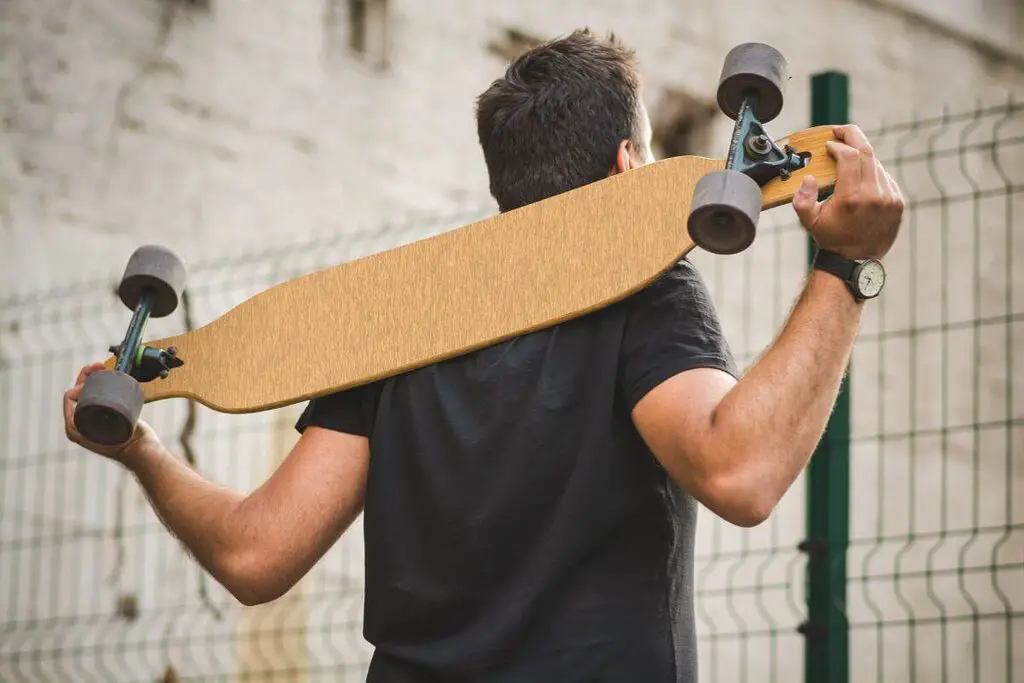
Wheel Width: Finding the Perfect Riding Surface
The width of the wheel is measured in millimeters and refers to the distance between each edge of the wheel. It plays a role in determining the riding surface and the overall performance of the wheel.
- Narrow Wheels: These wheels have a smaller width and offer less friction and weight. They are more responsive to quick movements, making them ideal for mastering tricks and technical skating.
- Wide Wheels: These wheels have a larger width and provide a more stable and balanced ride. They are sturdy and perform well both at the skate park and on the street.
Riding Surface: Maximizing Contact Patch
The riding surface of a wheel is the area between each edge of the wheel that makes contact with the ground. It affects the amount of grip and control you have while skating.
- Rounded Wheels: These wheels have a rounded shape on the sides, resulting in a smaller contact patch with the pavement. They offer more speed and are commonly used for street skating.
- Square Wheels: These wheels have a cut shape that maximizes the contact patch with the pavement. They provide maximum grip and are often used for transitions and bowl skating.
Choosing the right wheel shape depends on your personal preference and the type of skating you enjoy. Narrow wheels are great for technical tricks, while wide wheels offer stability and control.
Determining the Right Wheels for Your Skateboarding Style
Now that you understand the basics of skateboard wheel measurements and shapes, it’s time to consider your skateboarding style and choose the wheels that best suit your needs.
Street Skateboarding
If you’re into street skateboarding and love performing tricks, you’ll want to focus on wheels that offer a balance of speed and maneuverability. Here are some recommendations:
- Wheel Size: Opt for smaller wheels in the range of 50-54mm. These sizes provide the ideal combination of stability and maneuverability for performing flip tricks and technical street skating.
- Wheel Hardness: Choose wheels with a durometer rating of 99a and above. Harder wheels offer better responsiveness and slide easier, making them perfect for street skating and tricks.
Park Skateboarding
For park skateboarding, where you’ll be riding ramps, bowls, and transitions, you’ll want wheels that provide speed and control. Consider the following:
- Wheel Size: Opt for medium-sized wheels in the range of 55-58mm. These sizes offer a good balance between speed and maneuverability, allowing you to skate smoothly on park terrain.
- Wheel Hardness: Choose wheels with a durometer rating of 96a-99a. The slightly softer wheels provide the perfect mix of speed and grip for park skating.
Cruising and Transportation
If you primarily use your skateboard for cruising around town or transportation, comfort and smoothness are key. Consider the following:
- Wheel Size: Choose larger wheels in the range of 59mm and above. The bigger size will allow you to roll over rough surfaces more easily and provide a smooth ride.
- Wheel Hardness: Opt for softer wheels with a durometer rating of 78a-87a. These wheels offer better grip and absorb vibrations, providing a comfortable cruising experience.
Remember, these recommendations are general guidelines, and personal preference can play a significant role in choosing the right wheels for your skateboarding style. Don’t be afraid to experiment and find the perfect combination that suits your needs.
Additional Considerations
While wheel size and hardness are crucial factors to consider when choosing skateboard wheels, there are a few additional considerations that can further enhance your skateboarding experience.

Riser Pads and Shock Pads
If you plan on using larger wheels (55mm and above) or want to reduce the risk of wheel bite, consider using riser pads. Riser pads provide extra clearance between your deck and wheels, preventing the wheels from coming into contact with the deck during sharp turns or tricks. They are particularly useful when using larger wheels or skateboarding on rough terrains.
Alternatively, you can use shock pads, which are thin pads placed between the deck and trucks. They absorb vibrations and reduce stress cracks, providing a smoother ride. Shock pads are especially helpful when cruising or filming, as they minimize the impact on your skateboard.
Personal Factors: Height and Weight
Your height and weight can also influence the choice of skateboard wheels. Taller and heavier riders may benefit from larger and harder wheels, as they provide more stability and support. Conversely, smaller riders may prefer smaller and softer wheels for better maneuverability and control.
Maintenance and Upkeep
To ensure optimal performance and longevity of your skateboard wheels, regular maintenance is essential. Clean your wheels regularly to remove dirt and debris, as this can affect their performance. Additionally, rotate your wheels periodically to distribute wear evenly and extend their lifespan.
Conclusion
Choosing the right size skateboard wheels is crucial for optimizing your skateboarding experience. By considering factors such as diameter, durometer, shape, and your personal skateboarding style, you can find the perfect wheels that suit your needs and preferences. Remember to experiment with different sizes and hardness levels to find the ideal combination for your riding style. Whether you’re a street skater, a park enthusiast, or a cruiser, there’s a set of wheels out there that will keep you rolling smoothly and stylishly. Happy skating!
Faq’s
How do I know what size skateboard wheels to get?
Wheel size depends on your skating style:
Street/Technical: 52-54mm for maneuverability and flip tricks.
Park/Transition: 56-58mm for speed and handling bowls/ramps.
Cruising/Commuting: 58-70mm for smoother rides on rough surfaces.
Bigger = smoother, faster, but less flippable.
Smaller = lighter, more maneuverable, but bumpier.
Consider:
Skill level: Beginners might prefer larger, stable wheels.
Terrain: Rough surfaces benefit from bigger wheels.
Personal preference: Test different sizes to see what feels best!
Remember, you can always upgrade later!
What does the 54mm mean on skateboard wheels?
In skateboard wheels, 54mm refers to the diameter in millimeters. It tells you how tall the wheel is. Bigger wheels roll faster and smoother, but are less flickable for tricks. Smaller wheels are more maneuverable and easier to flip, but bumpier and slower. 54mm falls in the medium range, considered versatile for both street skating and cruising.
Are 99A wheels soft or hard?
99A wheels are very hard. It’s near the top end of the durometer scale for skateboard wheels, making them super smooth and fast, but with less grip and shock absorption compared to softer options. They’re ideal for park skating, bowls, and ramps but not the best for tricks on rough surfaces or for beginners needing more grip.
Are 52mm wheels too small?
Depends on your skating style!
For street/technical: Great! 52mm is ideal for flip tricks and maneuverability.
For park/transition: Maybe. Good for smaller bowls/ramps, but might feel slow on larger ones.
For cruising/commuting: Probably. Smaller wheels can be bumpy and less smooth on rough surfaces.
Consider:
Experience: Beginners might prefer larger, stable wheels.
Terrain: Smoother surfaces work better with smaller wheels.
Personal preference: Try different sizes to find your sweet spot!
In short, 52mm isn’t universally “too small,” but think about what you’ll be using them for.


